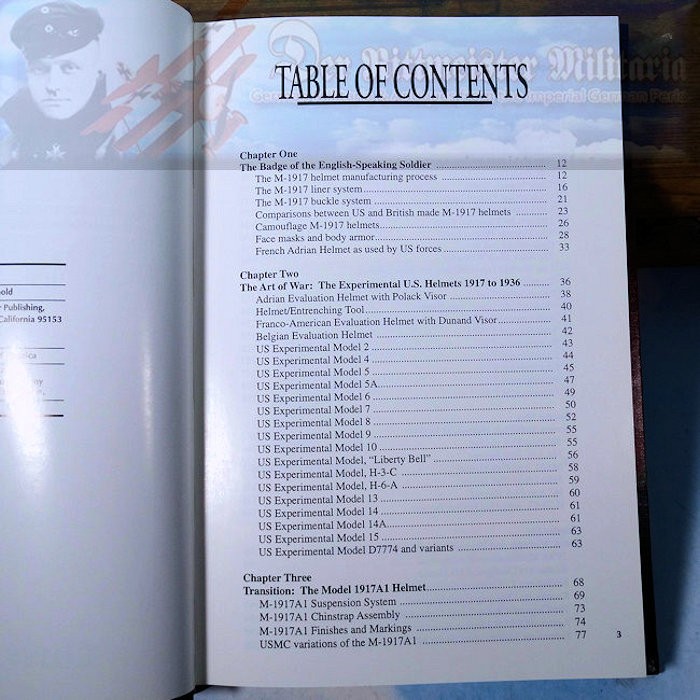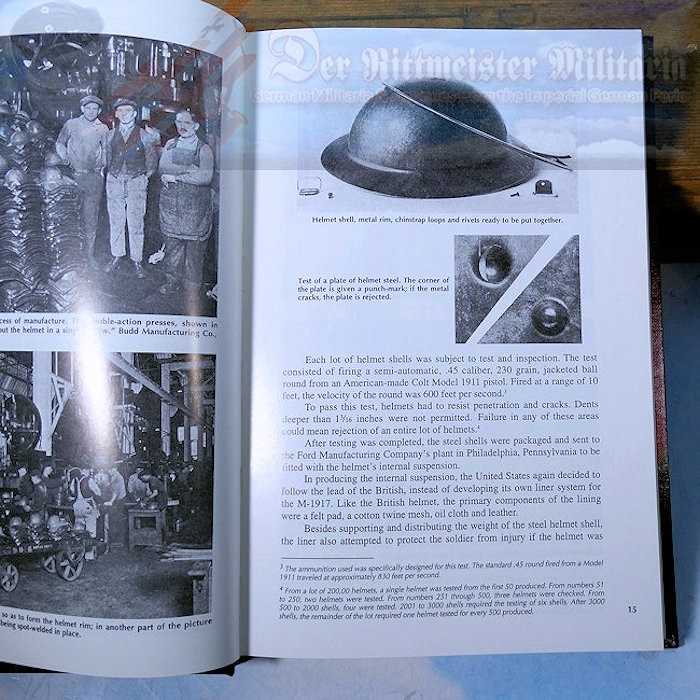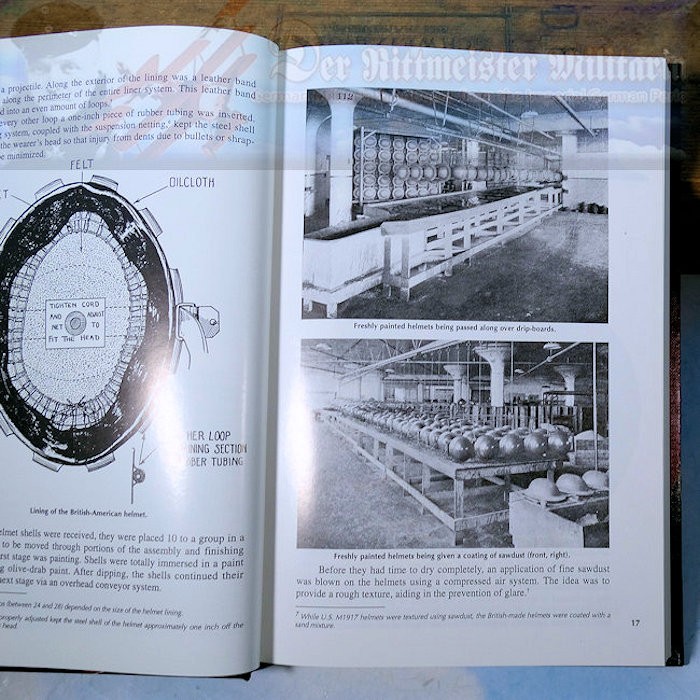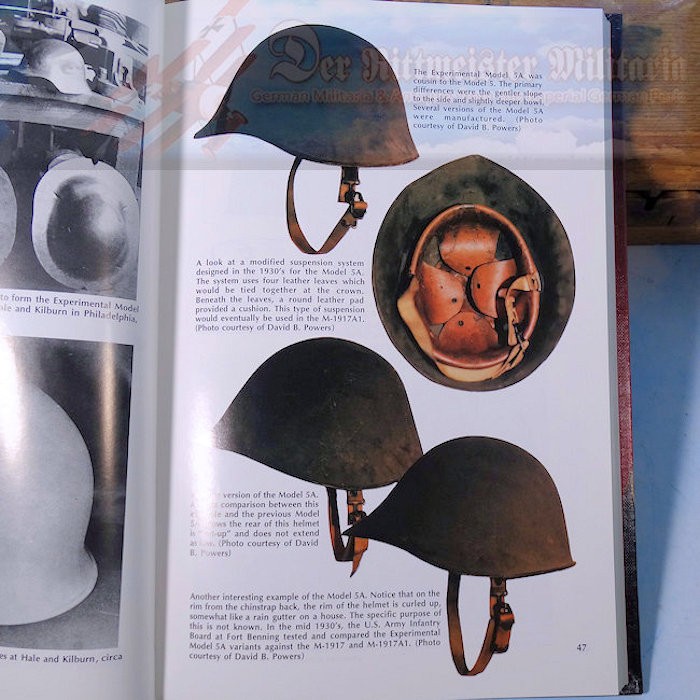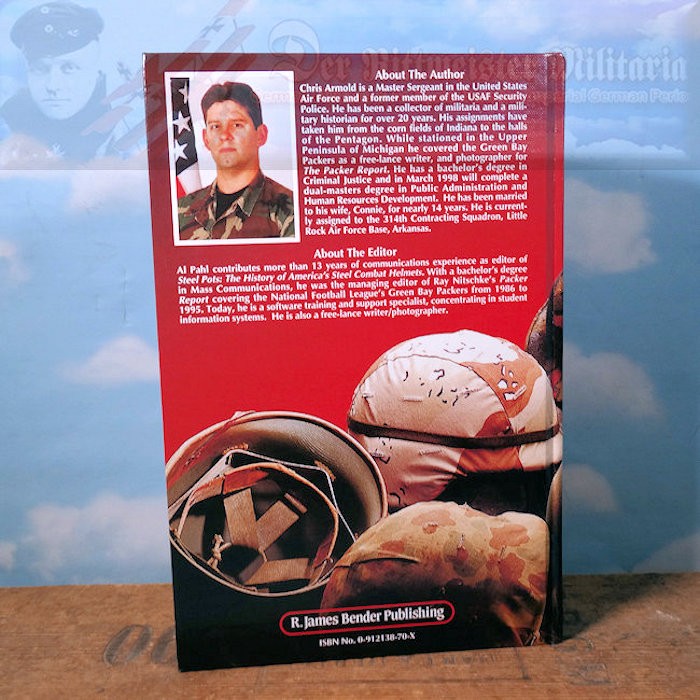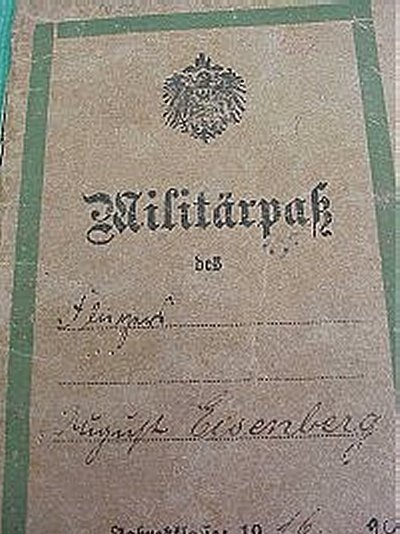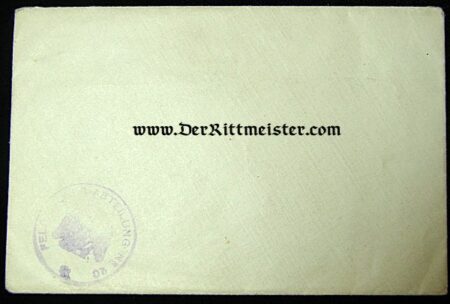Description
BOOK – STEEL POTS – BY CHRIS ARMOLD.
This fascinating book chronicles the USA’s military’s use of steel helmets, which began with WW I. At that time, the USA adopted Great Britain’s primary helmet, continuing its use into WW II’s early days, when a new version was introduced. While the previous sentence sums up the essential history of “steel pots,” the author goes far beyond mere basics by covering the years between the two World Wars and details some of the U.S. Army’s experimental helmets from the period. The latter spearheaded the relatively quick transition from the 1917’s helmet to the style used during WW II, Korea, and Viet Nam. The author discusses the helmet currently used by all US Armed Forces, which are now made of Kevlar™ to provide greater protection from bullets and shrapnel (the same material used for police and military forces’ body armor). Kevlar helmets also are far lighter and cooler to wear. [If you look at the USA’s current helmet, you will note that it is very similar to Germany’s WW I and WW II stahlhelme. American troops often refer to their helmets as “Fritz.”]
The book has 270+ photographs (both color and black and white, as well as sketches and graphs detailing the helmets’ evolution). While not Imperial German, it is comprehensive and makes for good reading.
[Let me include a word about its author, Chris Armold. Chris is a retired senior U.S. Air Force NCO who spent more than three years researching and writing his book. I first met Chris in 1996, the year we founded DRM. He became a good friend and advisor during our fledgling company’s early years. Chris even designed our first logo featuring Rittmeister Manfred von Richthofen flanked by his famous Fokker Dr 1 Triplane. We are still using that basic logo to this day (with some minor modifications made three years ago). He is a great guy to whom we always wish the best.
It is a first-edition that includes a 1997 dedication (the year the book was released) from Chris to me. Comparables on Amazon reveal that first editions like it can fetch around $130. Our example is in MINT condition and constitutes a real value!

